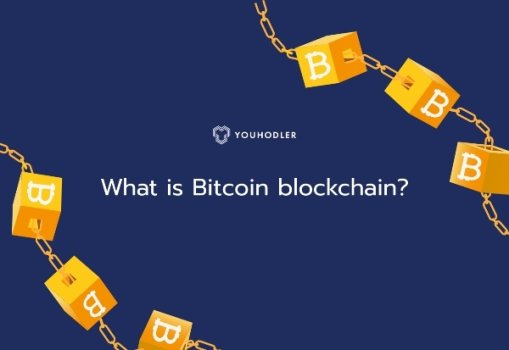Did you know that over 106 million people worldwide now use cryptocurrency? The most popular of them all is bitcoin! Understanding blockchains and how bitcoin works are the first essential steps to starting your journey in cryptocurrency. You have probably heard of confusing terms like ‘blockchains’, ‘cryptography’, ‘bitcoin mining’, and ‘decentralized crypto exchanges’.
Cryptocurrency can be intimidating to get into, and a lack of knowledge might be hindering your motivation to get into bitcoin trading or mining. We compiled all the most crucial information you need to know into one, easy-to-read guide. Welcome to the ultimate resource for bitcoin beginners. Today, we will explore what the bitcoin blockchain is and how it works.
What is the blockchain?
The blockchain is a public database distributed through online networks. It was first proposed as a research project in 1991. Think of it like a ledger that stores a constantly-updating record of every bitcoin transaction. When someone exchanges bitcoin, it is going from one person’s anonymous virtual wallet to another’s.
Unlike a normal database, the blockchain records its data in a different structure. Instead of submitting individual entries into a table format, data is collected and saved in groups, also called blocks.
What is a block?
To answer ‘What is the blockchain’, you need to know what blocks are. Blocks are interconnected and contain information. Hence, forming a chain of blocks – or a “blockchain.”. A blockchain stores all kinds of information. Making them great for smart contracts, non-fungible tokens (NFTs), and a variety of other use cases.
The information stored in these blocks includes the digital address of bitcoin wallets and the exact timestamp of the transaction. Bitcoin miners verify and publish the blocks. Then they are ‘stacked’ onto each other to form a new blockchain part. Once bitcoin miners deem it a safe and valid transaction, the new bitcoin block is transferred. Finally, it's recorded into the ledger for all to see.
Continue reading: https://www.youhodler.com/blog/bitcoin-blockchain
Cryptocurrency can be intimidating to get into, and a lack of knowledge might be hindering your motivation to get into bitcoin trading or mining. We compiled all the most crucial information you need to know into one, easy-to-read guide. Welcome to the ultimate resource for bitcoin beginners. Today, we will explore what the bitcoin blockchain is and how it works.
What is the blockchain?
The blockchain is a public database distributed through online networks. It was first proposed as a research project in 1991. Think of it like a ledger that stores a constantly-updating record of every bitcoin transaction. When someone exchanges bitcoin, it is going from one person’s anonymous virtual wallet to another’s.
Unlike a normal database, the blockchain records its data in a different structure. Instead of submitting individual entries into a table format, data is collected and saved in groups, also called blocks.
What is a block?
To answer ‘What is the blockchain’, you need to know what blocks are. Blocks are interconnected and contain information. Hence, forming a chain of blocks – or a “blockchain.”. A blockchain stores all kinds of information. Making them great for smart contracts, non-fungible tokens (NFTs), and a variety of other use cases.
The information stored in these blocks includes the digital address of bitcoin wallets and the exact timestamp of the transaction. Bitcoin miners verify and publish the blocks. Then they are ‘stacked’ onto each other to form a new blockchain part. Once bitcoin miners deem it a safe and valid transaction, the new bitcoin block is transferred. Finally, it's recorded into the ledger for all to see.
Continue reading: https://www.youhodler.com/blog/bitcoin-blockchain

